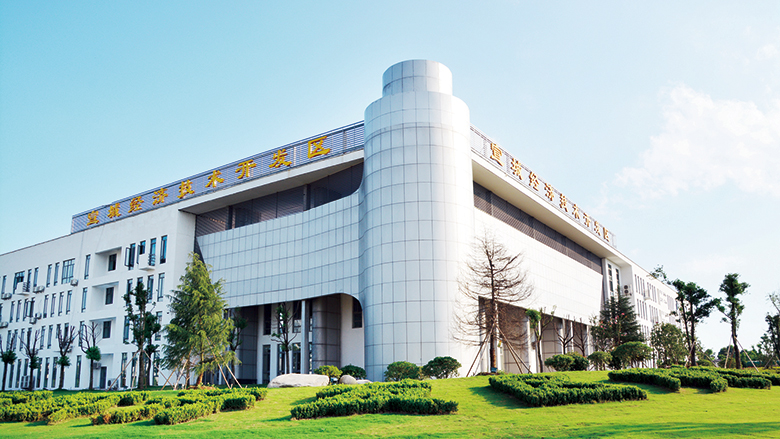Challenge
China’s rapid industrialization was mainly concentrated in eastern coastal provinces in the 1980s and 1990s. Since the turn of the century, however, rapidly rising production costs in the coastal areas forced many manufacturing firms to move inland or overseas. This created an opportunity for the less developed middle and western regions to capture some of the regional transfer of industry.
In 2010, the Government of China designated the Wanjiang City Belt, which includes Xuancheng and eight other cities along the Anhui section of the Yangtze River, as the first national-level demonstration zone for industrial relocation to achieve its national goal of structural optimization and the rise of the central regions.
Xuancheng City had a favorable location for industrial relocation between the coastal and interior regions along the Yangtze River, situated at the nearest point in Wanjiang to the affluent Yangtze River Delta, bordering the coastal provinces of Jiangsu and Zhejiang. The Xuancheng Economic and Technological Development Zone (XETDZ) was designated as the primary receiving site for the relocating firms.
Like most of its peers in China, XETDZ also faced many challenges such as limited transport and environmental infrastructure, difficulties in achieving environmental and energy sustainability, lagging social services, limited management tools for investment attraction and environmental monitoring, and poor integration with the core urban area nearby.
Approach
The Anhui Xuancheng Infrastructure for Industry Relocation Project was designed to help address these challenges and support the objective of economic, social and environmental sustainability by financing roads with underground infrastructure and technical assistance for investment promotion to attract firms to the area. To enhance social sustainability, the project would invest in drainage facilities, and drainage and sewage pipelines, positively impacting both firms and the living standard of the local community. To enhance environmental sustainability, the project would invest in a wastewater treatment plant, clean-up and de-silting of a canal, and a real-time environmental monitoring system. Technical assistance and training would strengthen the management capacity of the zone administration, including monitoring and evaluation (M&E) and a collaborative arrangement for local economic development.

Xuancheng Economic and Technological Development Zone. Photo: Xuancheng Project Management Office
Results
Implemented from 2014 to 2020, the project achieved the following key results:
- Improved transport access to XETDZ through construction of 52 kilometers non-urban roads and a 1.28 km overpass bridge on Tieshan road over the Shanghai-Chongqing Expressway with lanes for pedestrians and non-motorized vehicles.
- 100 percent coverage of the wastewater treatment service in the project area, which resulted in improved water sources for more than 18,000 urban residents and about 6,000 rural residents who also benefited from improved roads and employment opportunities.
- Establishment of a real-time environmental monitoring and early warning system with sensors in all key polluting enterprises, waterways, air quality stations, and stormwater and solid waste facilities, which allows immediate detection and response to any environmental pollution incidents. Strict environmental criteria were used to select environmentally friendly firms, such as acceptable environmental impact assessment (EIA), energy and water consumption, and emissions per unit of production.
- Strengthened institutional capacity of the zone administration through staff training, development of a collaborative platform for local economic development, and establishment of four ICT-based decision support systems including an intelligent investment promotion system, a labor market information system, an internal M&E system, and an environmental monitoring system.
- 215 firms relocated to XETDZ, attracted by the new infrastructure and a focused administration on industrial clusters and clean environment supported by the project. About 85 percent of them were relocated from outside Xuancheng, mostly from the Yangtze River Delta and the Pearl River Delta areas. The project implemented an improved marketing strategy and investment promotion system with an enterprise screening process to foster high-value industrial clusters (targeted industries include: auto parts, high end equipment manufacturing, renewable energy and new material, pharmaceuticals and bio-medical, and food and agriculture processing) and ensure high environmental standards.
- 6,449 new jobs created. The labor information system developed under the project included specific functions to attract women employees to the firms in XETDZ.